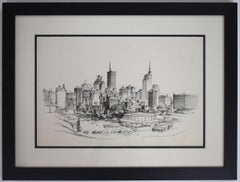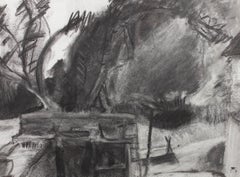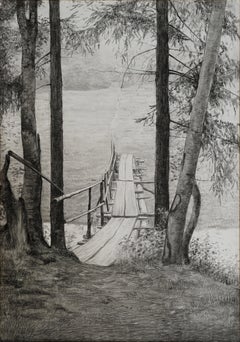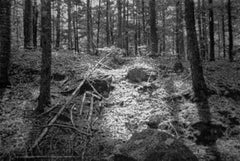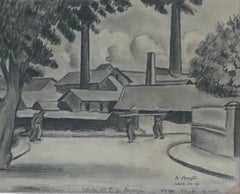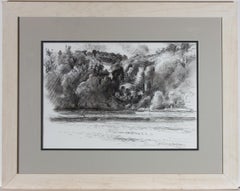Charcoal Landscape Drawings and Watercolors
20th Century Impressionist Charcoal Landscape Drawings and Watercolors
Charcoal
20th Century Charcoal Landscape Drawings and Watercolors
Charcoal
Early 2000s Realist Charcoal Landscape Drawings and Watercolors
Paper, Charcoal, Pencil
2010s Realist Charcoal Landscape Drawings and Watercolors
Charcoal, Ink
1940s Charcoal Landscape Drawings and Watercolors
Charcoal, Crayon
21st Century and Contemporary Charcoal Landscape Drawings and Watercolors
Charcoal
1920s Expressionist Charcoal Landscape Drawings and Watercolors
Paper, Charcoal, Watercolor
2010s Contemporary Charcoal Landscape Drawings and Watercolors
Paper, Charcoal
Mid-20th Century Impressionist Charcoal Landscape Drawings and Watercolors
Charcoal, Pastel, Watercolor
21st Century and Contemporary Contemporary Charcoal Landscape Drawings and Watercolors
Charcoal, Graphite, Ink, Paper, Watercolor
2010s Assemblage Charcoal Landscape Drawings and Watercolors
Charcoal, Acrylic, Archival Paper, Magazine Paper
1950s American Impressionist Charcoal Landscape Drawings and Watercolors
Charcoal
21st Century and Contemporary Charcoal Landscape Drawings and Watercolors
Paper, Charcoal
Early 2000s Realist Charcoal Landscape Drawings and Watercolors
Charcoal, Magazine Paper
19th Century Modern Charcoal Landscape Drawings and Watercolors
Paper, Charcoal
2010s Assemblage Charcoal Landscape Drawings and Watercolors
Charcoal, Archival Paper, Magazine Paper
1930s Charcoal Landscape Drawings and Watercolors
Charcoal
2010s Realist Charcoal Landscape Drawings and Watercolors
Charcoal, Archival Paper
1980s American Modern Charcoal Landscape Drawings and Watercolors
Charcoal, Archival Ink, Watercolor
2010s Contemporary Charcoal Landscape Drawings and Watercolors
Canvas, Charcoal
Late 20th Century Contemporary Charcoal Landscape Drawings and Watercolors
Paper, Charcoal
2010s Expressionist Charcoal Landscape Drawings and Watercolors
Charcoal, Pastel, Archival Paper
21st Century and Contemporary Realist Charcoal Landscape Drawings and Watercolors
Paper, Charcoal
1990s American Modern Charcoal Landscape Drawings and Watercolors
Watercolor, Ink, Charcoal
1960s Surrealist Charcoal Landscape Drawings and Watercolors
Charcoal
Mid-20th Century Modern Charcoal Landscape Drawings and Watercolors
Pastel, Charcoal
20th Century Charcoal Landscape Drawings and Watercolors
Charcoal, Watercolor
2010s Assemblage Charcoal Landscape Drawings and Watercolors
Charcoal, Archival Paper, Magazine Paper
Mid-20th Century American Impressionist Charcoal Landscape Drawings and Watercolors
Charcoal, Cardboard
1920s American Impressionist Charcoal Landscape Drawings and Watercolors
Paper, Charcoal
2010s American Modern Charcoal Landscape Drawings and Watercolors
Mixed Media, Acrylic, Charcoal
Mid-20th Century Modern Charcoal Landscape Drawings and Watercolors
Paper, Charcoal
2010s Realist Charcoal Landscape Drawings and Watercolors
Charcoal, Archival Paper, Graphite
Mid-20th Century Realist Charcoal Landscape Drawings and Watercolors
Charcoal
Mid-20th Century Modern Charcoal Landscape Drawings and Watercolors
Charcoal
1970s Contemporary Charcoal Landscape Drawings and Watercolors
Charcoal, Oil Pastel
1970s Charcoal Landscape Drawings and Watercolors
Mixed Media, Cardboard, Charcoal, Oil Pastel
19th Century Modern Charcoal Landscape Drawings and Watercolors
Charcoal, Pencil
Mid-20th Century Contemporary Charcoal Landscape Drawings and Watercolors
Charcoal
Mid-20th Century Charcoal Landscape Drawings and Watercolors
Charcoal
Mid-20th Century Contemporary Charcoal Landscape Drawings and Watercolors
Charcoal
1940s Abstract Charcoal Landscape Drawings and Watercolors
Charcoal, Gouache
Early 20th Century Charcoal Landscape Drawings and Watercolors
Charcoal
20th Century Charcoal Landscape Drawings and Watercolors
Watercolor, Charcoal
21st Century and Contemporary Naturalistic Charcoal Landscape Drawings and Watercolors
Paper, Charcoal
21st Century and Contemporary Naturalistic Charcoal Landscape Drawings and Watercolors
Paper, Charcoal
Mid-20th Century Charcoal Landscape Drawings and Watercolors
Charcoal, Graphite
Mid-20th Century Modern Charcoal Landscape Drawings and Watercolors
Paper, Charcoal
Mid-20th Century Modern Charcoal Landscape Drawings and Watercolors
Paper, Charcoal
1990s Contemporary Charcoal Landscape Drawings and Watercolors
Charcoal, Ink, Handmade Paper
19th Century Naturalistic Charcoal Landscape Drawings and Watercolors
Charcoal, Archival Paper
1930s Post-Impressionist Charcoal Landscape Drawings and Watercolors
Paper, Charcoal
1950s Charcoal Landscape Drawings and Watercolors
Paper, Charcoal, Graphite
21st Century and Contemporary Charcoal Landscape Drawings and Watercolors
Charcoal
1940s Charcoal Landscape Drawings and Watercolors
Charcoal, Ink, Board, Pen
1920s Post-Impressionist Charcoal Landscape Drawings and Watercolors
Watercolor, Charcoal, Ink
Mid-20th Century Post-Impressionist Charcoal Landscape Drawings and Watercolors
Charcoal, Paper, Pastel
2010s Contemporary Charcoal Landscape Drawings and Watercolors
Charcoal, Paper
Early 20th Century French School Charcoal Landscape Drawings and Watercolors
Charcoal, Pastel
21st Century and Contemporary Contemporary Charcoal Landscape Drawings and Watercolors
Archival Ink, Archival Paper, Charcoal, Graphite, Watercolor
